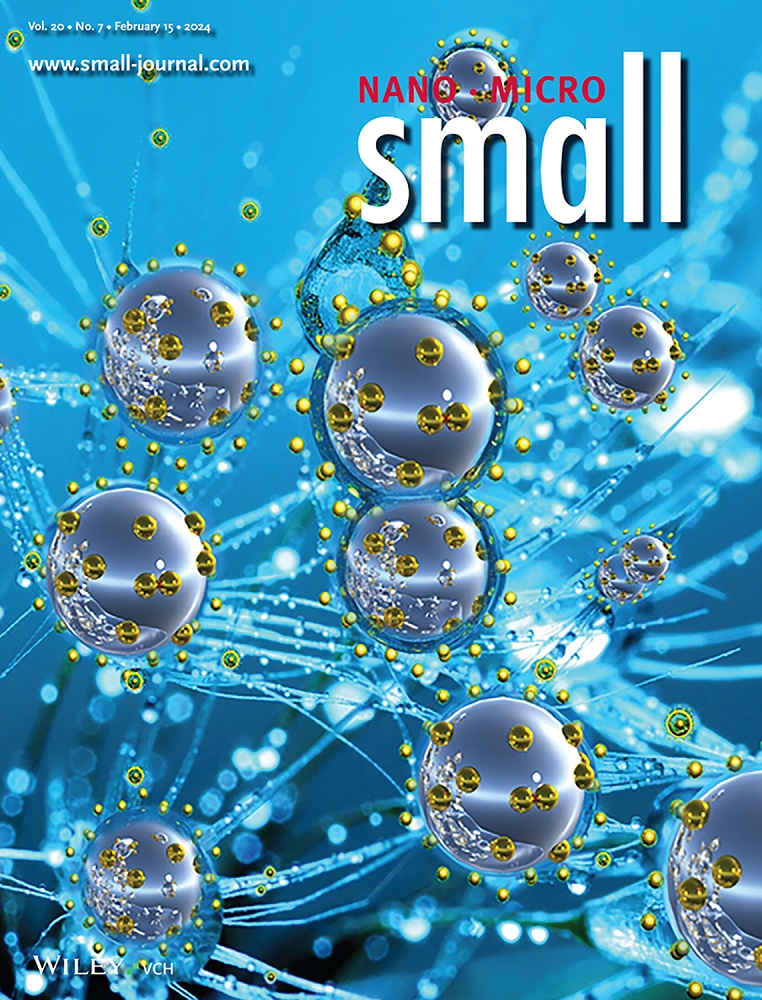ZGSO:Cr3+,Ni2+ Persistent Phosphors with Dual Emission in NIR-I and SWIR Ranges for Bio-Imaging Applications
IF 13
2区 材料科学
Q1 CHEMISTRY, MULTIDISCIPLINARY
引用次数: 0
Abstract
Persistent luminescence (PersL) is widely used for near infrared (NIR-I, 650–950 nm) imaging as they allow getting images without background. Bio-imaging in the second shortwave-infrared region SWIR-II (NIR-II, 1000–1400 nm) is less widespread but is growing as it offers the advantages of low photon scattering, increased in vivo penetration depth, and improved imaging clarity. In this work, the preparation and the complete optical properties of a new material is reported, Zn1.33Ga1.33Ni0.005Cr0.005Sn0.33O3.995 (ZGSO:Cr3+, Ni2+) able of emitting in both deep-red/NIR-I and SWIR (NIR-II) and shows its potential in bioimaging. ZGSO:Cr3+, Ni2+ can be excited using different sources such as X-rays, UV, and visible light to emit persistent signals in dual biological windows (dual-BW). By integrating an energy transfer process from Cr3+ to Ni2+ within this newly synthesized material, the influence of co-dopants on signal intensity and emission wavelengths is sought to explore. PersL at ≈700 nm (NIR-I) and ≈1300 nm (NIR-II) have been tested in preliminary bioimaging experiments using different protocols, allowing signal detection with good spatial resolution and depth sensitivity. The dual-BW PersL imaging strategy expands the toolbox for highly accurate analysis and has, for the first time, allowed access to accurately high-resolution sensing, and tracing.

用于生物成像应用的具有近红外 I 和 SWIR 双发射波段的 ZGSO:Cr3+,Ni2+ 持久性荧光粉
本文章由计算机程序翻译,如有差异,请以英文原文为准。
求助全文
约1分钟内获得全文
求助全文
来源期刊

Small
工程技术-材料科学:综合
CiteScore
17.70
自引率
3.80%
发文量
1830
审稿时长
2.1 months
期刊介绍:
Small serves as an exceptional platform for both experimental and theoretical studies in fundamental and applied interdisciplinary research at the nano- and microscale. The journal offers a compelling mix of peer-reviewed Research Articles, Reviews, Perspectives, and Comments.
With a remarkable 2022 Journal Impact Factor of 13.3 (Journal Citation Reports from Clarivate Analytics, 2023), Small remains among the top multidisciplinary journals, covering a wide range of topics at the interface of materials science, chemistry, physics, engineering, medicine, and biology.
Small's readership includes biochemists, biologists, biomedical scientists, chemists, engineers, information technologists, materials scientists, physicists, and theoreticians alike.
 求助内容:
求助内容: 应助结果提醒方式:
应助结果提醒方式:


